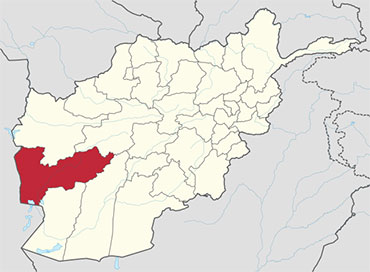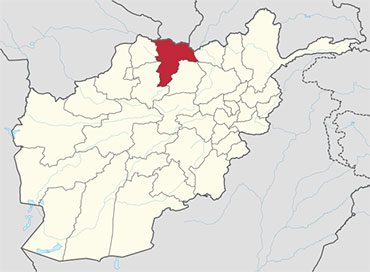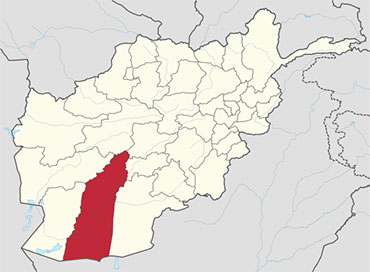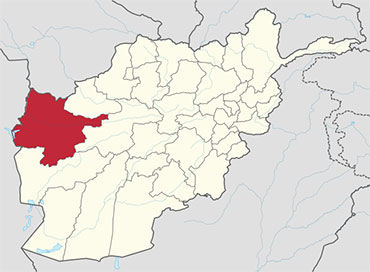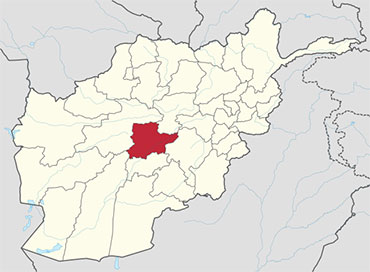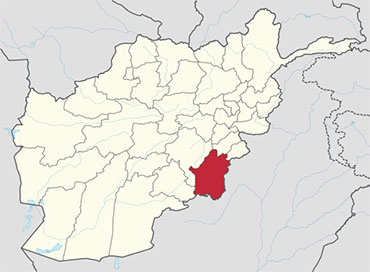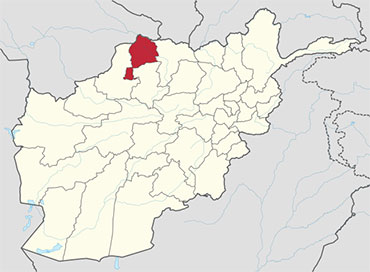 Jowzjan, sometimes spelled as Jawzjan or Jozjan is one of the thirty-four provinces of Afghanistan, located in the north of the country bordering neighboring Turkmenistan. The province is divided into 11 districts and contains hundreds of villages. It has a population of about 512,100, which is multi-ethnic and mostly agriculturers. Sheberghan is the capital of Jozjan province.
Jowzjan, sometimes spelled as Jawzjan or Jozjan is one of the thirty-four provinces of Afghanistan, located in the north of the country bordering neighboring Turkmenistan. The province is divided into 11 districts and contains hundreds of villages. It has a population of about 512,100, which is multi-ethnic and mostly agriculturers. Sheberghan is the capital of Jozjan province.
History
Between the early 16th century and mid-18th century, the area was ruled by the Khanate of Bukhara. It was conquered by Ahmad Shah Durrani and became part of the Durrani Empire in or about 1750, which formed to the modern state of Afghanistan. The area was untouched by the British during the three Anglo-Afghan wars that were fought in the 19th and 20th centuries.
Recent history
Following a series of changing allegiances and falling out with Uzbek warlord Abdul Malik Pahlawan in 1997, the Taliban withdrew from the area, but in 1998 a contingent of 8,000 Taliban troops pressed through neighboring Faryab, seizing Abdul Rashid Dostum’s headquarters in Sheberghan.
Swedish-led Provincial Reconstruction Team (PRT), which has been based in Mazar-e-Sharif since about 2005 and responsible for four provinces including Jozjan, established an office and some troops in the province. Security situation in the province has rapidly deteriorated in 2009 and 2010. A new Turkish PRT has also been established in the province in the summer of 2010, providing security to the area which also covers Sar-e Pol. The Afghan National Security Forces (ANFS) began expanding in the last decade and gradually took over security from International Security Assistance Force (ISAF). The Afghanistan-Turkmenistan border is maintained by the Afghan Border Police (ABP) while law and order for the rest of the province is provided by the NATO-trained Afghan National Police (ANP).
Although it can be regarded as a relatively secured place compared to some other provinces of Afghanistan, there is an increasing number of incidents particularly in Darzab, Qush Tepa and Fayzabad districts. The Mazar-e-Sharif-Sheberghan highway (called Aqyol) has turned into a dangerous traveling route because of militants carrying out attacks against government forces, NGO workers and civilians.
In April 2012 construction of a mega power network with power pylons carrying 500 megawatts of electricity from neighboring Turkmenistan started in the province; the project is supported by Turkmenistan and Turkey. Initial work on the $390 million project had already been completed. Turkmenistan will install power pylons over a distance of 374 kilometres on its soil toward the Afghanistan border and the project will take a year to complete.[5] The network would supply electricity to many areas in Jozjan, Balkh, Sar-e Pol, Faryab and Kabul provinces.
Healthcare
The percentage of households with clean drinking water increased from 24% in 2005 to 44% in 2011.
Demography
Jozjan is situated in the northern part of Afghanistan, bordering Turkmenistan in the north, Balkh province in the east, Sar-e Pol province in the south and Faryab province in the west. Jozjan province covers an area of 10,326 km². More than one quarter of the province is mountainous or semi mountainous terrain (29.4%), while more than two thirds of the area is made up of flat land (68.9%). It is one of the provinces known to contain petroleum and natural gas. Mining and agriculture are the main industries.
The population of Jozjan province is about 512,100, which is multi-ethnic and mostly agriculturers. The main ethnic groups living in the province are Turkmen followed by Uzbek, Pashtun, Tajik and possibly a few others. Occasional ethnic violence are reported in the area, the last one in 2002
Districts
Jowzjan province is divided into about 11 districts and contains over 1,000 villages.
| Province | Population | Area |
|---|---|---|
| Aqcha | 78,067 | |
| Darzab | 50,189 | |
| Fayzabad | 42,482 | |
| Khamyab | 14,280 | |
| Khaniqa | 23,762 | |
| Khwaja Du Koh | 27,482 | |
| Mardyan | 39,362 | |
| Mingajik | 42,802 | |
| Qarqin | 25,271 | |
| Qush Tepa | 24,002 | |
| Sheberghan | 171,556 |
